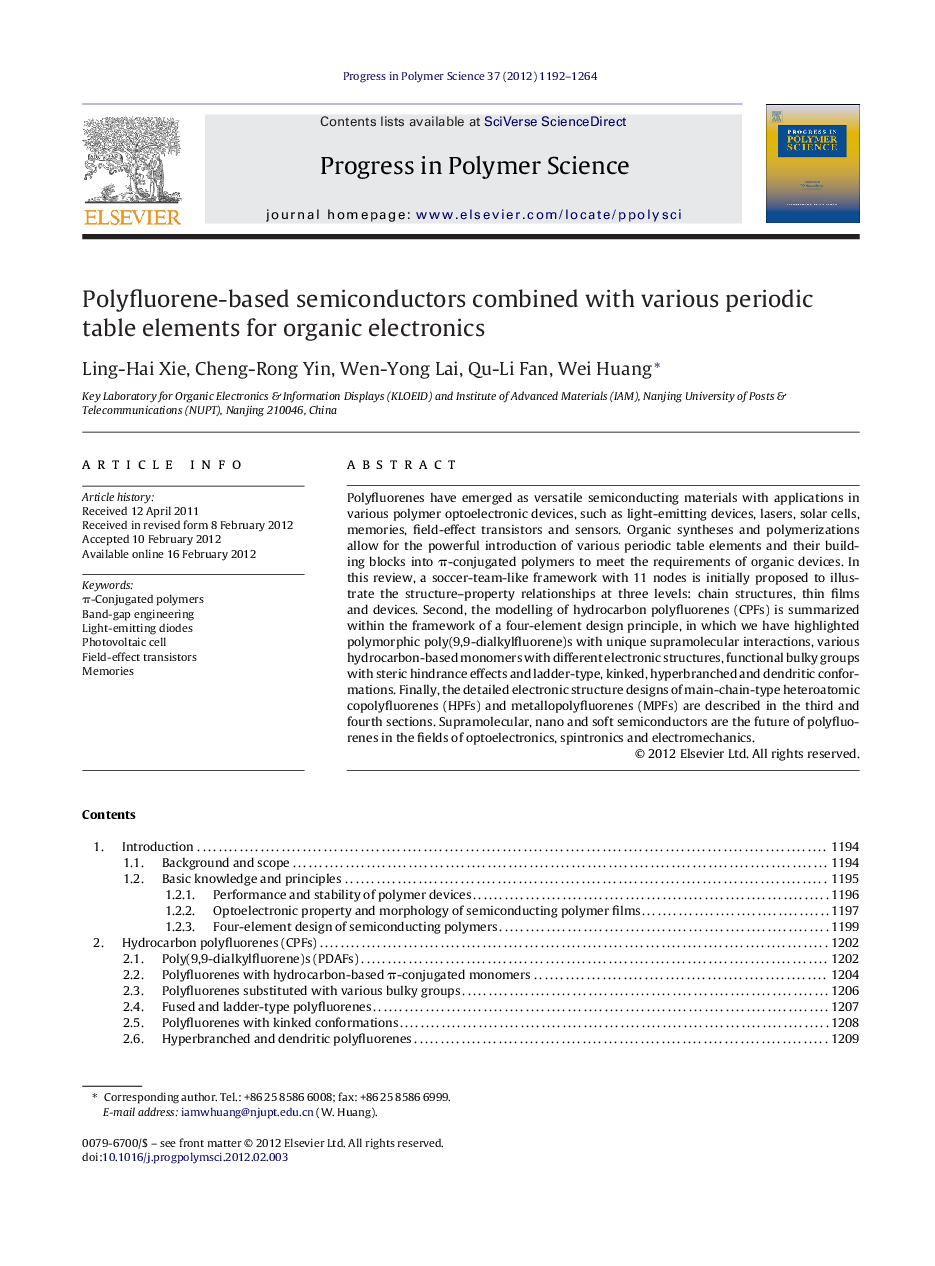| Article ID | Journal | Published Year | Pages | File Type |
|---|---|---|---|---|
| 5208467 | Progress in Polymer Science | 2012 | 73 Pages |
Abstract
Polyfluorenes have emerged as versatile semiconducting materials with applications in various polymer optoelectronic devices, such as light-emitting devices, lasers, solar cells, memories, field-effect transistors and sensors. Organic syntheses and polymerizations allow for the powerful introduction of various periodic table elements and their building blocks into Ï-conjugated polymers to meet the requirements of organic devices. In this review, a soccer-team-like framework with 11 nodes is initially proposed to illustrate the structure-property relationships at three levels: chain structures, thin films and devices. Second, the modelling of hydrocarbon polyfluorenes (CPFs) is summarized within the framework of a four-element design principle, in which we have highlighted polymorphic poly(9,9-dialkylfluorene)s with unique supramolecular interactions, various hydrocarbon-based monomers with different electronic structures, functional bulky groups with steric hindrance effects and ladder-type, kinked, hyperbranched and dendritic conformations. Finally, the detailed electronic structure designs of main-chain-type heteroatomic copolyfluorenes (HPFs) and metallopolyfluorenes (MPFs) are described in the third and fourth sections. Supramolecular, nano and soft semiconductors are the future of polyfluorenes in the fields of optoelectronics, spintronics and electromechanics.
Keywords
Related Topics
Physical Sciences and Engineering
Chemistry
Organic Chemistry
Authors
Ling-Hai Xie, Cheng-Rong Yin, Wen-Yong Lai, Qu-Li Fan, Wei Huang,
